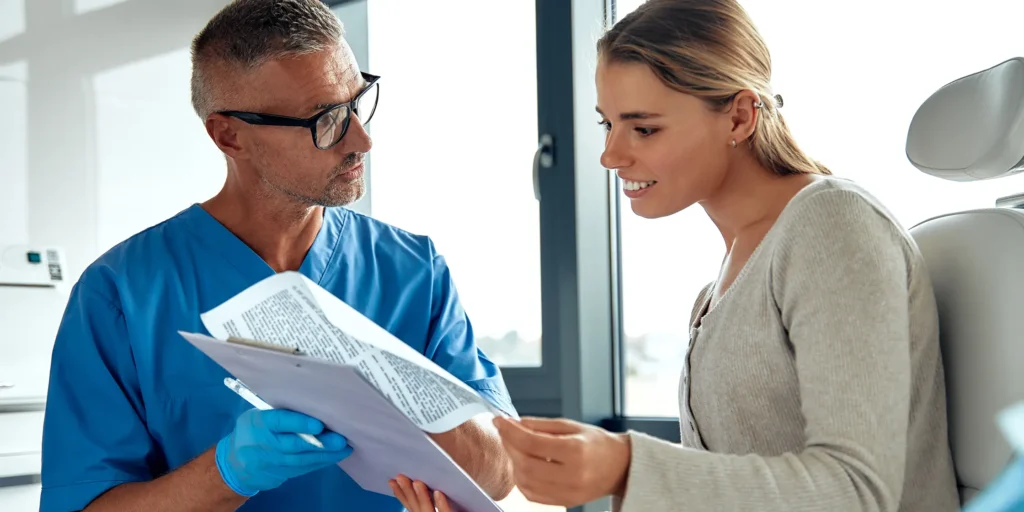
The Beginner’s Guide to Remote Patient Monitoring
In recent years, remote patient monitoring (RPM) has become increasingly prevalent. It is no surprise, as this technology enhances the patient care experience while allowing monitoring outside of a traditional clinical setting.
RPM also has the potential to reduce healthcare delivery costs, which makes care more accessible overall. Remote patient monitoring is especially beneficial for managing chronic diseases, tracking physical ailments, and supervising post-hospitalization rehabilitation.
However, many care providers and physicians do not fully understand remote patient monitoring requirements and regulations. These deficiencies have the potential to hinder the implementation of RPM programs and decrease reimbursement. It can even result in non-compliance with the requirements and fee schedule of the Centers for Medicare & Medicaid Services (CMS).
With this in mind, Med USA created this comprehensive guide to remote patient monitoring. The discussion below will cover how patients can qualify for RPM, which states require coverage by insurance companies, and specific billing requirements.
Our goal is to facilitate a better patient care experience by helping healthcare organizations implement successful RPM programs.
What is Remote Patient Monitoring?
Generally speaking, remote patient monitoring refers to the practice of securely documenting, collecting, and exchanging clinical data using remote technology. With these devices, your medical team can remotely monitor patients using tools like:
- Grip strength sensors for Parkinson’s disease
- Musculoskeletal risk stratification equipment
- Calorie-tracking monitors
- Dementia surveillance cameras
- Oximeters
- Blood pressure cuffs
- Heart rate monitors
- Glucose meters
The specific array of devices issued to a patient will depend on the condition(s) from which they suffer. For instance, a patient who has been diagnosed with diabetes, hypertension, and dementia will likely be outfitted with multiple pieces of RPM equipment.
By using remote patient monitoring devices, your staff can closely monitor patients without having to bring them into the office or admit them to a long-term care facility. Staff members can rapidly determine whether the patient is stable, improving, or suffering deterioration and in need of emergency care.
Many Americans are already using self-monitoring tools, such as smart devices and self-purchased equipment. A remote patient monitoring program replaces these devices with medical-grade equipment and facilitates secure information sharing between patients and medical professionals.
Is Remote Patient Monitoring the Same as Telehealth?
The phrase “telehealth” is a broad term used to describe the entire remote care industry. Telehealth includes video conferencing, phone conversations, and other means of communication. Remote monitoring platforms fall under the larger umbrella of telehealth.
Your organization does not need to offer a full suite of telehealth services to incorporate RPM into its current care practices. Remote patient monitoring can be introduced as a standalone service inside the scope of care already provided by your staff.
How Patients Qualify for RPM
Historically, remote patient monitoring was limited to individuals who suffered from chronic conditions. However, the COVID-19 pandemic created a huge surge in demand for remote care across all patient groups.
In response, the federal government and CMS expanded their coverage of RPM services to include both chronic and acute conditions.
Despite these changes, chronic conditions are still the primary driver of remote patient monitoring technologies, as patients in this category often require prolonged care.
Chronic
Physicians and other care providers can monitor any chronic disease or acute condition with RPM technologies. However, certain ailments tend to benefit more from remote patient monitoring solutions. Some of these conditions include:
- Diabetes
- Congestive heart failure
- COPD
- Hypertension
- Dementia
- Obesity
- Behavioral health
Patients diagnosed with these conditions require ongoing monitoring to allow healthcare teams to readily identify any changes in status. Care team professionals must detect sudden deterioration quickly and provide a proactive medical response.
Through remote patient monitoring, your care team will be better equipped to respond to the types of unexpected medical events that these patients may encounter.
Acute
While this usage is less prevalent, acute conditions can also be monitored using RPM technologies. The COVID-19 virus and its related health effects were a primary factor in the current expansion of remote patient monitoring coverage.
This amendment to CMS’ RPM requirements means that care team members can now monitor patients who are suffering from the following conditions remotely:
- Respiratory infections
- Pneumonia
- Heart attacks
- Flu
- Severe burns
- Bronchitis
- Severe injuries that result in limited mobility
Your staff can consider implementing RPM devices into the care plan when they are treating patients for the conditions listed above, as well as others. However, some requirements limit when and how you can bill for RPM services. We will discuss these restrictions in greater detail below.
Before utilizing remote patient monitoring equipment for acute care, your staff should consider specific patient factors. Care teams should determine whether the patient is at an increased risk of experiencing severe complications, has had difficulty attending face-to-face appointments, and whether they are likely to experience symptoms for a prolonged period of time.
As always, physicians and other care professionals should decide to use RPM solutions on a patient-by-patient basis. An individual analysis will help your team choose the best care strategy for each patient’s unique needs.
States that Require Coverage for Remote Patient Monitoring
Currently, remote patient monitoring is not mandatory coverage in all 50 states. However, many health insurance providers are adding RPM to their covered service lists because it is extremely cost-effective.
In addition, the CMS has drastically expanded its policy regarding remote patient monitoring coverage. It remains to be seen whether they will scale back this coverage in the future, after the large expansion prompted by the COVID-19 pandemic.
As is often the case, several states are being proactive in updating their healthcare regulations. Specifically, fifteen states, along with Washington, D.C., have implemented legislation requiring health insurers to provide coverage for RPM services.
The states that have passed such laws include:
- Arizona
- Arkansas
- Colorado
- Connecticut
- Georgia
- Maine
- Maryland
- Massachusetts
- Mississippi
- Nebraska
- New Hampshire
- New Jersey
- New Mexico
- Virginia
- West Virginia
Some of these states have implemented broader legislation to require healthcare insurers to cover RPM services and telehealth solutions, while others have limited the legislation to address remote patient monitoring exclusively.
In the coming years, more states will likely implement RPM coverage mandates. Such coverage increases will expand the already surging demand for remote patient monitoring technologies and software.
State legislators are not the only ones that are becoming more conscious of the benefits of remote patient monitoring solutions. Patients are also expressing a desire for access to remote healthcare technologies on a large scale.
Rising patient demand means organizations should strongly consider implementing remote patient monitoring solutions if they do not already have them in place. Doing so will drastically enhance the care experience, save money, and streamline data sharing.


